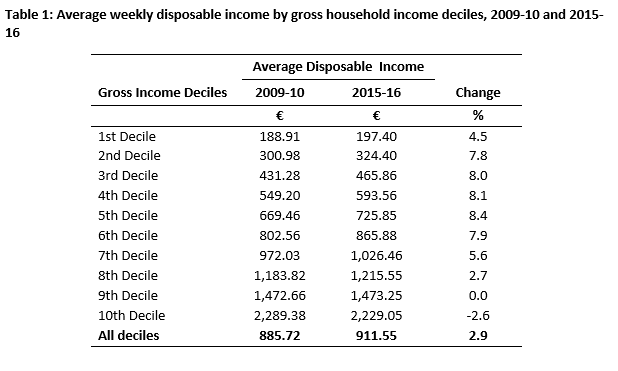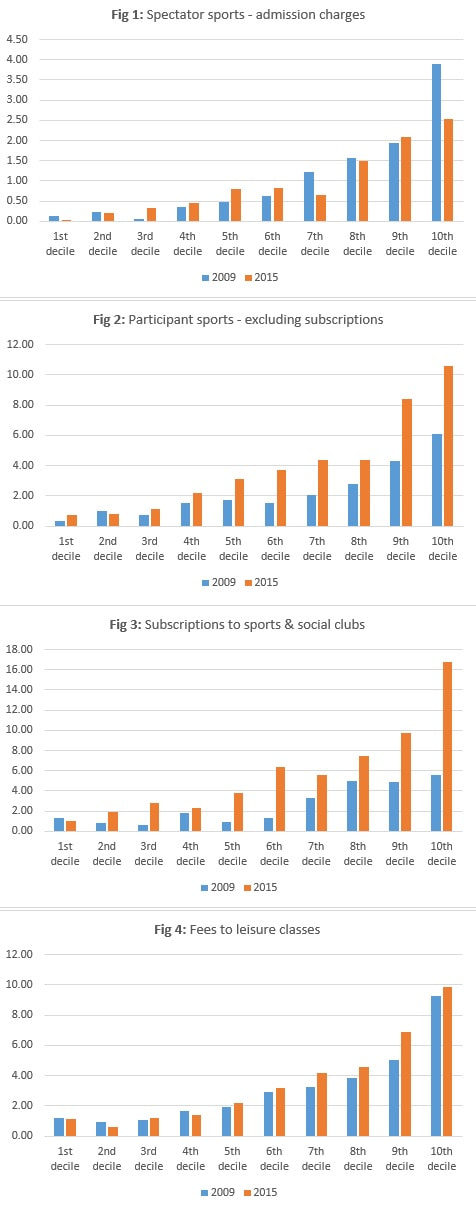My first post on Irish Household Sports Expenditures (here) looked at spending on four categories of sport (spectator sports - admission charges, participant sports - excluding subscriptions, subscriptions to sports and social clubs and fees to leisure classes) in relation to changes between the 2009-10 and 2015-16 Household Budget Surveys (HBS) and in terms of variation in spending across location. In my second post, I am going to look at variation in spending on these items across gross income deciles.
According to the data recorded in the 2015-16 Household Budget Survey (HBS), the average gross weekly household income for the State was €1,099.70, which was 7.1% higher than the €1,026.77 figure recorded in 2009-10. Disposable income (which is arrived at after the deduction of income tax and social insurance) increased by 2.9% from €885.72 to €911.55. The table below displays average weekly disposable income by gross household income deciles for both surveys.
Income also has a positive influence across time for most sports categories. The patterns of spending on sports participation and subscriptions to sports clubs appear to have changed the greatest with a significant amount more been spent by middle and high earners. The latter is perhaps surprising given the changes in average disposable income for these earners shown in table 1. Fees to leisure classes, in the main, retain the same pattern across income deciles (with slight increases in each decile). In contrast to the other categories, spectator sports spending has fallen especially for high income earners although there are slight increases in spending for middle income earners. In my previous post I speculated that the overall drop in spending on spectator sports maybe a post-recession effect. The figures here suggest that this might be concentrated in households in the 10th decile where spending decreased significantly between 2009-10 and 2015-16. Perhaps these households have switched preferences from spectator sports to sports participation and/or sports clubs.
Overall, it is difficult to decipher what underlies these changes. The figures clearly show that there is an income effect but this is more pertinent for some categories of sport than others and is more pertinent for some income earners than others. There are clearly other effects too including sociodemographic variables. Next time, I will look at one of those which is closely related to income, livelihood status.


 RSS Feed
RSS Feed